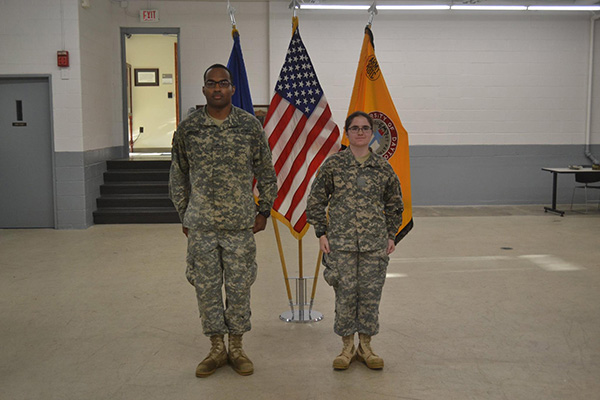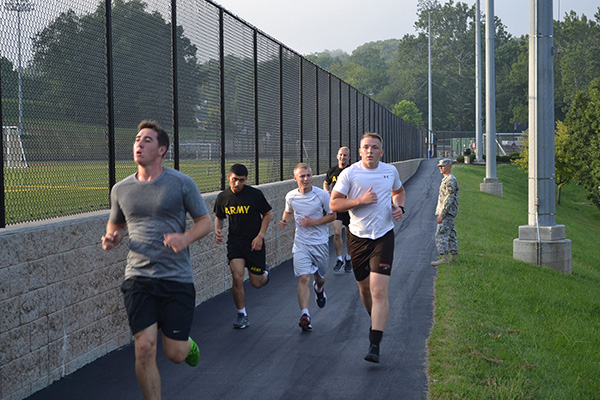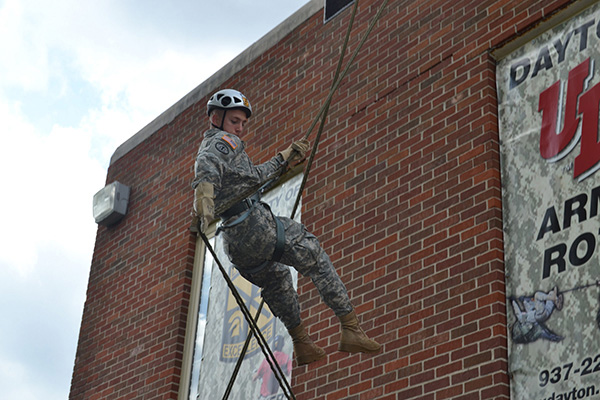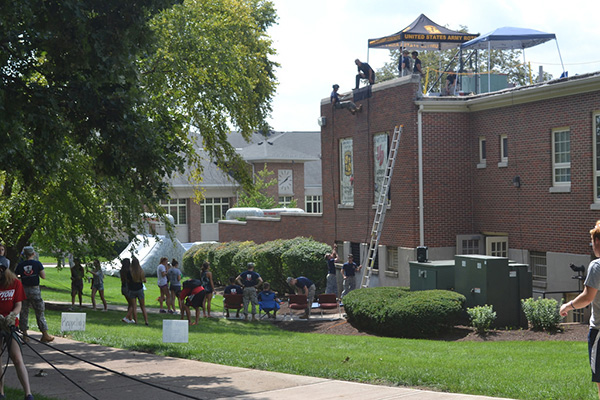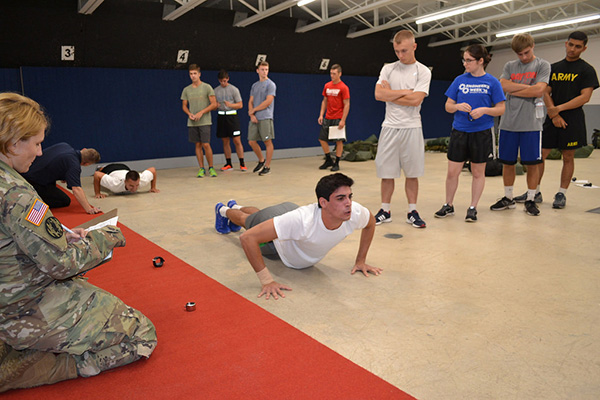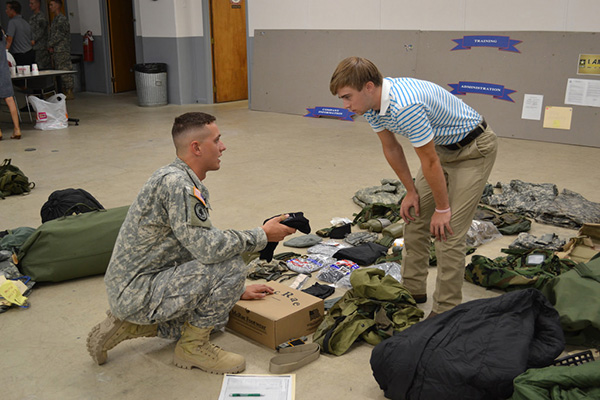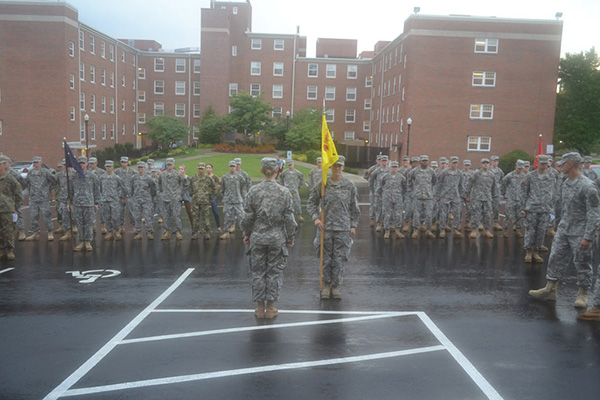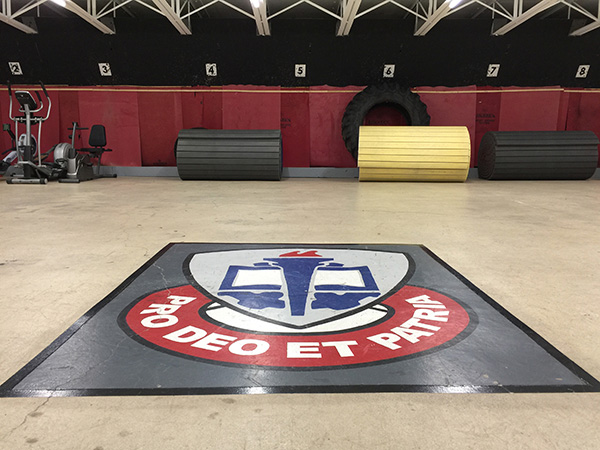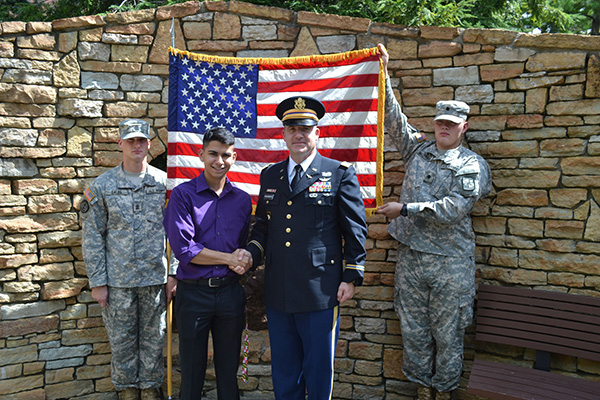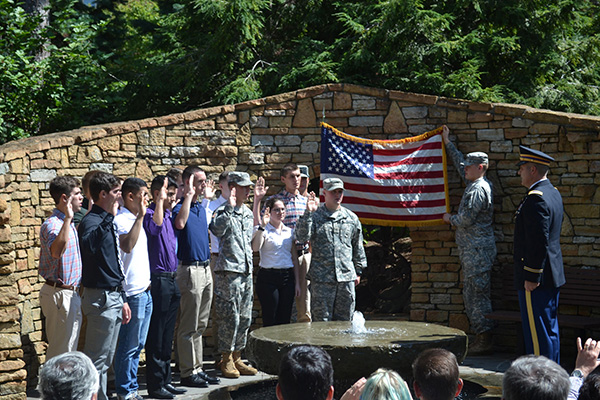College of Arts and Sciences Newsroom
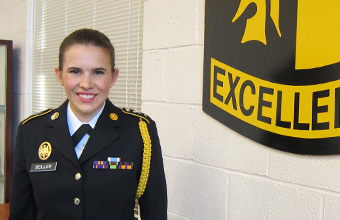
"Fighting Flyers" Centennial
The U.S. Army Reserve Officers' Training Corps program at the University of Dayton has been commissioning military officers for nearly a century, embodying the University's motto: Learn, Lead and Serve.
Founded in 1917, the University’s Army ROTC program is one of the oldest and longest-running in the country. Now known as the Fighting Flyers battalion, it was started not long after the modern Army ROTC itself was created by the National Defense Act of 1916.
“We have been producing leaders on the UD campus for 100 years,” said Maj. Jeff Rosenberg, professor and chair of the department of military science, who leads the program. The University will celebrate its centennial during the 2016-17 academic year with several commemorative events.
Army ROTC helps develop leadership, management and communication skills that are valued by both military and civilian employers. The program involves classroom learning, team-building exercises, and indoor and outdoor hands-on training.
ROTC students take one related elective each semester and receive their commissions as active duty or reserve officers when they graduate.
“These ROTC cadets are students first,” Rosenberg said. “They are here to get a college education; the commissioning and a career in the military are second.”
Cadet Madeline Seiller, a sophomore pre-medicine major from Mason, Ohio, was awarded a full, four-year ROTC scholarship as a high school senior and contracted with the Army during her freshman year.
When she graduates in 2019, Seiller will be commissioned as a second lieutenant and fulfill her four-year active duty service obligation. In exchange, the Army will pay for her undergraduate degree. Service commitments vary based on scholarships and whether graduates serve on active duty or in the reserve.
Because she plans to attend medical school, Seiller plans to apply for a health profession scholarship and education delay, which would extend her service commitment to eight years.
“There are so many students who will be in debt longer than I will be in the military — unless I choose to serve longer because I’m enjoying it, which I hope I will,” Seiller said. “I’d like to complete all 20 years of service until retirement.”
Seiller praised her ROTC experience for providing her with a sense of community, as well as a balance between her studies and the leadership and physical training.
Next summer, she plans to do international humanitarian work through the ROTC Cultural Language and Understanding Proficiency program.
In February, ROTC alumni will be invited to join cadets at the annual formal dress dinner to honor the program’s anniversary. Other events are also in the works.
In addition, the College of Arts and Sciences has upgraded ROTC facilities at O’Reilly Hall, where cadets sometimes can be seen rappelling from the building’s roof.
The basement firing range, where cadets learn marksmanship, was repainted and outfitted with new lighting and ballistic blankets, as well as new carpeting in the adjacent study lounge. The dedicated ROTC classroom on the first floor was wired for audio-visual presentations and is brighter thanks to fresh paint, new lighting and the removal of window coverings.
ROTC also has offices, a computer lab, an equipment supply room and a restricted arms room secured by a steel-bar door, computer-controlled locks and surveillance cameras. Cadets conduct their physical training at nearby RecPlex and Stuart Field.
“As far as facilities go, this is terrific,” Rosenberg said. “I talk with my peers at other universities and they don’t have anything like this.”
The University’s ROTC program averages 80 cadets annually; women typically make up about 20 percent. Rosenberg said the cadets represent a broad range of academic majors, with many from the natural sciences, computer science and engineering. International students are also represented, with new cadets this year from India and Palestine.
Army ROTC has a total of 275 programs at U.S. colleges and universities, with an enrollment of more than 30,000. The program produces more than 70 percent of the second lieutenants who join the active Army, Army National Guard and Army Reserve. More than 40 percent of current active duty Army general officers were commissioned through the ROTC.
- Dave Larsen, communication coordinator, College of Arts and Sciences

